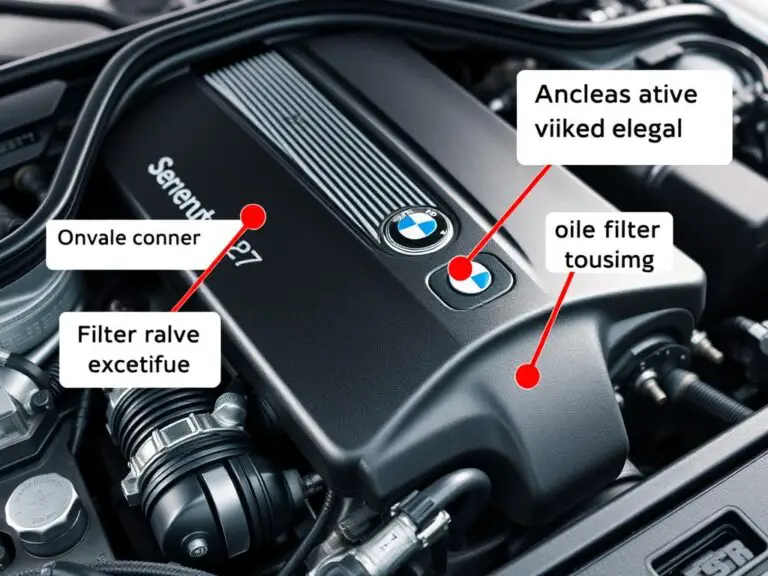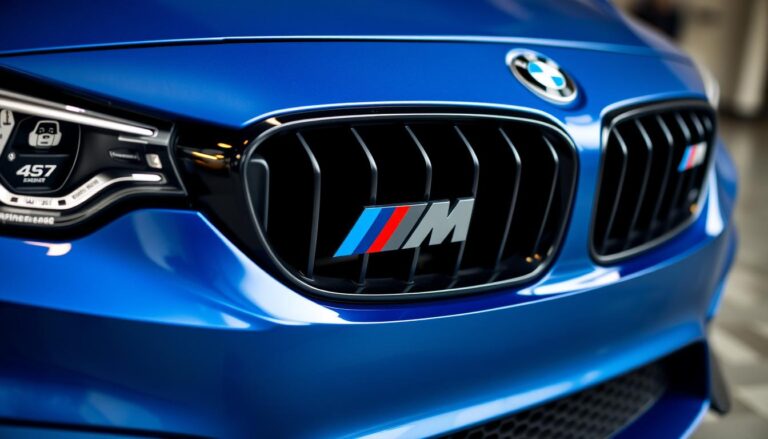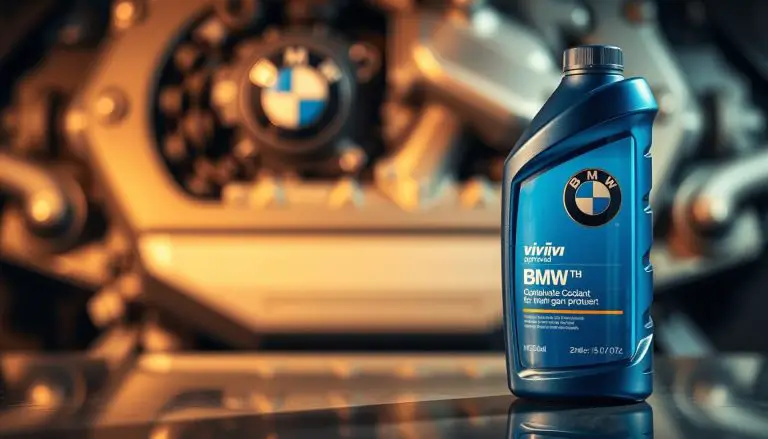Modern vehicles, notably those from esteemed manufacturers such as BMW, are equipped with advanced diagnostic systems. The BMW Code 3100 signifies a particular issue with the vehicle’s engine or associated components. Grasping the implications, causes, and remedies for this code is essential for preserving the vehicle’s performance and longevity.
Encountering the BMW Code 3100 can be distressing, notably for those unfamiliar with its significance. This article endeavors to offer a detailed exploration of the Code 3100. It aims to elucidate its meaning, the underlying causes, and the corrective actions that can be undertaken.
Key Takeaways
- Understanding the significance of BMW Code 3100.
- Identifying the potential causes of the fault code.
- Learning how to fix the issue indicated by Code 3100.
- Preventive measures to avoid encountering the code in the future.
- Importance of regular vehicle maintenance.
Understanding BMW Code 3100
The appearance of BMW Code 3100 necessitates an immediate comprehension of its implications. This diagnostic trouble code is indicative of malfunctions within the vehicle’s fuel system or other critical components.
Definition and Technical Explanation
BMW Code 3100 signifies a specific fault identified by the onboard diagnostics system of the vehicle. It pertains to the fuel system’s functionality, indicating a potential issue that necessitates prompt attention. The code is logged when the Engine Control Unit (ECU) detects anomalies in the fuel system’s operation, such as improper fuel pressure or a malfunctioning fuel pump.

Which BMW Models Are Commonly Affected
Several BMW models are frequently linked to the Code 3100 error. These include:
- BMW 3 Series (E90/E92)
- BMW 5 Series (F10/F11)
- BMW X5 (E70/F15)
- BMW X3 (F25)
These models are susceptible to this issue due to their intricate fuel systems and the advanced technology embedded in contemporary BMW vehicles.
Common Symptoms of BMW Code 3100
BMW Code 3100 manifests through a variety of symptoms, crucial for diagnosing issues in affected models. Grasping these symptoms is essential for pinpointing the problem and initiating corrective measures.
Warning Lights and Dashboard Indicators
The illumination of specific warning lights on the dashboard is a common indicator of BMW Code 3100. The Check Engine Light often serves as the initial warning sign. Its behavior, whether flashing or steady, signals the severity of the problem. Dashboard indicators may also alert to issues with the fuel system or engine performance.
Engine Performance Issues
When BMW Code 3100 is triggered, drivers may encounter a variety of engine performance problems. These can include reduced engine power, rough idling, or hesitation during acceleration. In severe cases, the vehicle may enter a “limp mode,” drastically limiting engine performance to prevent further damage.
Other Observable Symptoms
Beyond the typical warning lights and performance issues, other symptoms may indicate BMW Code 3100. These can include decreased fuel efficiency, unusual engine noises, or a noticeable decrease in vehicle responsiveness. Recognizing these symptoms aids in diagnosing the code more accurately.

Identifying the symptoms of BMW Code 3100 is the initial step towards resolving the issue. By understanding the warning signs and performance issues, owners can promptly diagnose and repair the problem. This ensures their BMW operates efficiently and smoothly.
Primary Causes of BMW Code 3100
Grasping the fundamental causes of BMW Code 3100 is imperative for efficacious diagnosis and rectification. This error code is frequently linked to malfunctions that impede the vehicle’s operational efficiency and performance.
Fuel System Malfunctions
Fuel system malfunctions are a prevalent source of BMW Code 3100. Such issues stem from diverse factors, encompassing:
- Clogged fuel filters that impede fuel circulation
- Faulty fuel pumps that are incapable of maintaining requisite pressure
- Leaks within the fuel system that precipitate pressure diminutions
Should the fuel system malfunction, it can induce the engine control module (ECM) to register the Code 3100 error. Adherence to regular maintenance, such as fuel filter replacement and leak detection, can avert these malfunctions.
Sensor Failures and Wiring Problems
Sensor failures and wiring anomalies are another pivotal contributor to BMW Code 3100. Contemporary BMWs depend on a network of sensors to monitor engine performance. When these sensors fail or the wiring sustains damage, it can transmit aberrant signals to the ECM.
Common sensor-related issues encompass:
- Faulty oxygen sensors that furnish erroneous readings
- Malfunctioning mass airflow sensors that disrupt engine functionality
Wiring anomalies, such as corrosion or damage, can also precipitate signal disruptions. The inspection and replacement of defective sensors, coupled with the repair of wiring anomalies, can often rectify Code 3100.
Electronic Control Unit Errors
The Electronic Control Unit (ECU) serves as the central nervous system of the engine management system. Errors within the ECU can provoke the Code 3100 error. These errors might emanate from software glitches or hardware malfunctions within the ECU.
In certain scenarios, the rectification of the issue may involve the updating of the ECU software. Yet, if the ECU itself is defective, its replacement may be necessary. Accurate diagnosis of the ECU is critical to ascertain the appropriate corrective action for BMW Code 3100.
By comprehending these primary causes, BMW proprietors can initiate the diagnostic process and rectification of the Code 3100 error, potentially averting substantial repair expenditures and time.
Tools and Equipment Needed for Diagnosis
Grasping the necessity of specific tools for diagnosing BMW Code 3100 is paramount for successful repair endeavors. The commencement of this process necessitates the acquisition of appropriate equipment, ensuring precise identification and potential resolution of the problem at hand.
OBD-II Scanner Requirements
An OBD-II scanner stands as a fundamental tool for diagnosing BMW Code 3100. It is imperative to select a scanner that is not only compatible with BMW vehicles but also supports the CAN (Controller Area Network) protocol, a standard prevalent in BMWs. For further guidance on selecting the most suitable diagnostic tool, refer to this comprehensive guide.
Additional Diagnostic Tools
In addition to an OBD-II scanner, other diagnostic tools may be indispensable. These include a multimeter for conducting electrical system assessments and specialized BMW diagnostic equipment for more detailed analyses. Automotive professionals emphasize the critical role of the right tools in the diagnostic process.
Software Considerations for BMW Vehicles
For BMW-specific diagnostics, software compatible with BMW’s proprietary systems is often indispensable. This encompasses software for coding and programming BMW vehicles. It is crucial to ensure that any software employed is current and compatible with your vehicle’s model year.
Armed with the correct tools and a thorough understanding of their application, one can effectively diagnose and potentially rectify BMW Code 3100 issues.
Step-by-Step Diagnostic Process for BMW Code 3100
To effectively diagnose BMW Code 3100, it’s crucial to follow a step-by-step process. This ensures that the root cause of the issue is identified accurately and efficiently.
Preparing Your Vehicle for Diagnosis
Before starting the diagnostic process, ensure your BMW is properly prepared. This involves checking the basics such as oil level, coolant level, and ensuring that the battery is in good condition. It’s also essential to check for any software updates for your vehicle’s systems.
Connecting the Scanner and Reading Codes
The next step is to connect an OBD-II scanner to your BMW’s OBD-II port. This port is usually located under the steering column. Once connected, the scanner will read the trouble codes stored in your vehicle’s onboard computer. For BMW Code 3100, the scanner should display this code along with any other related codes.
It’s essential to use a scanner that is compatible with BMW vehicles and can read manufacturer-specific codes.
Interpreting Diagnostic Results
After retrieving the codes, the next step is to interpret the results. BMW Code 3100 indicates a specific issue that needs to be addressed. Refer to the scanner’s manual or a reliable repair manual for your BMW model to understand what this code signifies.
Additional Testing Procedures
Depending on the initial diagnostic results, additional testing may be required. This could involve checking the fuel system, inspecting sensors and wiring, or performing other specific tests recommended by the repair manual. A thorough inspection will help identify the root cause of the problem.
| Test | Description | Expected Outcome |
|---|---|---|
| Fuel System Check | Inspect fuel system for leaks or blockages | No leaks or blockages |
| Sensor Inspection | Check sensors for damage or malfunction | Sensors functioning correctly |
| Wiring Inspection | Inspect wiring for damage or corrosion | Wiring in good condition |
By following these steps, you can effectively diagnose BMW Code 3100 and identify the necessary repairs.
How to Fix BMW Code 3100
Addressing BMW Code 3100 necessitates a meticulous strategy to uncover and rectify the underlying issues. This entails a blend of self-assessment diagnostics, potential component substitution, and comprehension of associated expenditures.
Simple DIY Solutions to Try First
Initiate with elementary DIY interventions prior to engaging in intricate repairs. Commence by examining the fuel cap, as a loose or compromised cap can precipitate the Code 3100 error. Verify the cap’s tightness and scrutinize it for any signs of deterioration.
Subsequent to the fuel cap inspection, proceed to evaluate the vehicle’s battery and charging apparatus. A suboptimal battery or a malfunctioning alternator can induce problems culminating in the Code 3100 error. Employ a multimeter to assess the battery’s voltage and the alternator’s output.
Replacing Faulty Components
In the event that DIY endeavors fail to rectify the issue, the subsequent step involves identifying and substituting defective components. Common offenders include malfunctioning fuel sensors, wiring anomalies, or a defective Electronic Control Unit (ECU). Diagnostic evaluations are instrumental in identifying the precise component necessitating replacement.
Upon component substitution, it is imperative to utilize OEM (Original Equipment Manufacturer) parts or superior aftermarket alternatives. This guarantees compatibility and dependability.
Repair Cost Estimates
The financial outlay for BMW Code 3100 repairs exhibits considerable variability contingent upon the root cause. For example, the replacement of a fuel sensor typically ranges from $200 to $500, inclusive of labor. More intricate repairs, such as ECU substitution, can escalate to $500 to $1,500 or more.
| Component | Cost Range |
|---|---|
| Fuel Sensor | $200 – $500 |
| ECU Replacement | $500 – $1,500 |
| Wiring Repair | $100 – $300 |
Resetting the System After Repairs
Post-repair, it is imperative to reset the system to eradicate the Code 3100 error. Utilize an OBD-II scanner to clear the fault code. Concurrently, conduct a test drive to affirm the resolution of the issue and the absence of code recurrence.
Resetting the system also entails verifying for any ECU software updates and ensuring that all repairs are meticulously documented for future reference.
Common Mistakes to Avoid When Fixing Code 3100
The successful resolution of BMW Code 3100 issues is contingent upon the avoidance of prevalent errors during the repair process. Many BMW proprietors and technicians encounter pitfalls that complicate the repair or exacerbate the issue.
Misdiagnosing the Root Cause
Misidentification of the root cause of Code 3100 is a critical error. This can precipitate unnecessary repairs, elevate costs, and extend vehicle downtime. To circumvent this, employing the correct diagnostic tools and adhering to a systematic diagnostic methodology is imperative.
- Ensure your OBD-II scanner is compatible with your BMW model.
- Follow the manufacturer’s diagnostic procedures.
- Consider seeking a second opinion if the problem persists after initial repairs.
Using Incompatible Parts
Utilizing parts incompatible with your BMW’s specifications is another prevalent mistake. This not only fails to rectify the issue but also may introduce additional complications.
- Verify the part numbers to ensure they match your vehicle’s requirements.
- Purchase parts from reputable suppliers or directly from BMW.
- Consult with a professional if you’re unsure about the compatibility of a part.
Improper Reset Procedures
Following repairs, improper system reset can leave the Code 3100 unresolved, causing confusion and frustration. It is essential to adhere to the correct reset procedure for your BMW’s system.
- Refer to your vehicle’s manual or a trusted repair guide.
- Use a high-quality OBD-II scanner that supports BMW-specific reset functions.
- Test the system thoroughly after resetting to ensure the issue is resolved.
By recognizing these common pitfalls and taking measures to circumvent them, one can ensure a more efficient and effective repair process for BMW Code 3100.
When to Seek Professional BMW Service
Recognizing the necessity for professional intervention in addressing BMW Code 3100 can significantly mitigate potential financial burdens and prevent irreparable harm to your vehicle. While certain malfunctions may be rectified through DIY endeavors, the complexity of others necessitates the specialized knowledge of a BMW expert.
Signs the Problem Requires Expert Attention
Indicators that professional assistance is imperative include persistent or recurring Code 3100 errors, unusual engine sounds, and the ineffectiveness of self-attempts at resolution. Disregarding these indicators can precipitate more critical issues, such as engine deterioration or failure, which entail substantial repair expenses.
Further, if you are not adept in DIY diagnostics or repairs, or lack the requisite tools and equipment, professional intervention is advisable. A proficient BMW specialist will possess the requisite expertise and resources to accurately diagnose and rectify the issue with alacrity.
Finding a Qualified BMW Specialist
To identify a qualified BMW specialist, initiate by soliciting recommendations from acquaintances, perusing online reviews, or consulting with local automotive service providers. Seek out mechanics with a proven track record in BMW maintenance and certification from reputable automotive organizations. Certifications such as ASE (National Institute for Automotive Service Excellence) serve as a testament to their proficiency and professionalism.
Questions to Ask Your Mechanic
Upon identifying a potential BMW specialist, it is crucial to pose pertinent inquiries to guarantee optimal service. Inquire about their experience with BMW Code 3100, their diagnostic methodology, and the anticipated cost of repairs. Understanding the repair process and associated costs beforehand enables you to make informed decisions regarding your vehicle’s maintenance.
Conclusion
Grasping the essence of BMW Code 3100 is imperative for upholding your vehicle’s operational integrity and averting engine-related malfunctions. This discourse has delved into the code’s implications, its causative factors, and viable remedies.
Recapitulating, BMW Code 3100 frequently pertains to malfunctions within the fuel system, sensor malfunctions, or glitches in the electronic control unit. Adherence to the diagnostic methodology delineated herein enables the identification and rectification of the underlying issue. For scenarios demanding advanced intervention or diagnostic ambiguity, recourse to professional BMW service is advisable.
In summation, addressing BMW Code 3100 necessitates a confluence of expertise, appropriate instrumentation, and a methodical diagnostic strategy. By distilling the article’s salient points and executing the requisite actions, you can effectively mitigate the problem, thus ensuring your BMW’s optimal performance.
FAQ
What does BMW Code 3100 mean?
BMW Code 3100 signifies a generic fault, pointing towards malfunctions within the vehicle’s fuel system or associated components.
Which BMW models are commonly affected by Code 3100?
Code 3100 manifests in a variety of BMW models, encompassing the 3 Series, 5 Series, and X5, among others.
What are the symptoms of BMW Code 3100?
Symptoms encompass decreased engine performance, an illuminated check engine light, and potentially other dashboard warning lights.
Can I diagnose BMW Code 3100 myself?
Affirmative, an OBD-II scanner can be employed to read the code and potentially diagnose the issue. Complex problems, though, may necessitate professional intervention.
How do I fix BMW Code 3100?
Repairs entail addressing fuel system malfunctions, replacing faulty sensors or wiring, or resolving electronic control unit errors.
What tools are needed to diagnose Code 3100?
An OBD-II scanner is indispensable, with additional diagnostic tools potentially required based on the specific issue.
Can I reset the system after repairing Code 3100?
Affirmative, after completing repairs, the system can be reset using an OBD-II scanner or by consulting a professional mechanic.
When should I seek professional help for Code 3100?
If the diagnosis or repair’s uncertainty persists, or if the issue endures post-attempts at fixes, consulting a qualified BMW specialist is advisable.
How much does it cost to repair Code 3100?
Repair costs fluctuate based on the root cause, ranging from relatively low for simple fixes to several hundred dollars for more intricate repairs.
Can using incompatible parts cause further issues with Code 3100?
Affirmative, utilizing incompatible parts can precipitate additional problems, underscoring the criticality of selecting the correct components for your BMW.


